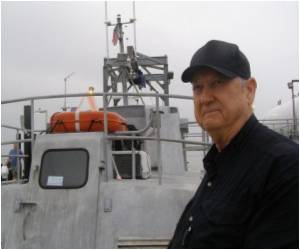
The debris would be injected at high pressure into the blowout preventer, a 450-ton device that sits atop the wellhead. If that succeeds, the well would be injected with cement to seal it.
The drill rig Deepwater Horizon exploded April 20 and sank two days later, about 50 miles off the southeast coast of Louisiana, leaving 11 workers lost at sea. The well has been pouring an estimated 210,000 gallons (5,000 barrels) of light, sweet crude into the Gulf for three weeks now. But so far, natural forces, human effort and some good fortune have kept the spill from becoming all-out environmental disaster, scientists said.
BP, the Coast Guard, and state and local authorities have scrambled to keep the oil from reaching shore or the ecologically delicate coastal wetlands off Louisiana. They have burned off patches of the slick, deployed more than 280 miles of protective booms, skimmed as much as 4 million gallons of oily water off the surface of the Gulf and pumped more than 400,000 gallons of chemical dispersants onto the oil.
Nevertheless, oil has washed up on barrier islands in Louisiana's Breton and Chandeleur sounds, spread west of the Mississippi River, and balls of tar associated with the spill have been reported as far east as Dauphin Island, off the Alabama coast. And the federal government has closed the area to commercial fishing, curtailing one of the region's biggest industries.
An oily sheen has reached the shores of some of Louisiana's barrier islands, but there has been no repeat of disastrous scenes of widespread oil-soaked wildlife and beaches, as in the 1989 wreck of the supertanker Exxon Valdez in Alaska's Prince William Sound.
Advertisement
"The currents are very complex in that area, and they change pretty dramatically, so it's very difficult to predict what they will do," he said.
Advertisement
After the Deepwater Horizon explosion, BP quickly marshaled a third of the world's available supply of dispersants, chemicals that break surface oil slicks into microscopic droplets that can sink into the sea.
But the benefits of keeping some oil out of beaches and wetlands carry uncertain costs. Scientists warn that the dispersed oil, as well as the dispersants themselves, might cause long-term harm to marine life.
The company continues to stockpile and deploy oil-dispersing chemicals manufactured by a company with which it shares close ties, even though other U.S. EPA-approved alternatives have been shown to be far less toxic and, in some cases, nearly twice as effective, wrote Paul Quinlan in New York Times.
Source-Medindia
GPL









